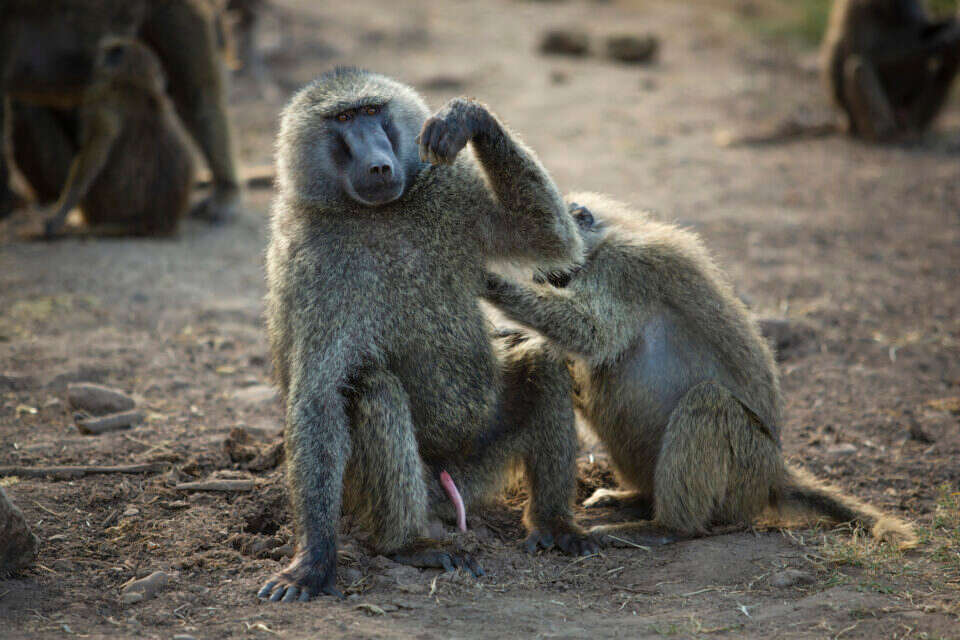On the occasion of International Monkey Day, which fell today (Wednesday), we decided to bring you some facts you didn't know about the primate - and try to help you understand a little more about this wonderful animal, which is the closest thing to us, humans.
The Banana Myth: Monkeys, just like humans, have a tendency to diabetes, therefore bananas are less good for them.
What's more, they don't really like banana, and prefer avocado, corn and grapes in general.
You don't look the monkey in the eye, as this would be a clear threat to him.
Lice sounds?
The action we see the monkeys do to each other is not lice roasting, but combing.
The act of combing is not only for the purpose of cleanliness, but the monkeys' way of expressing affection and love.
A monkey eating a banana (archive), photo: I.P.
4. The combing politics: in many cases, the monkeys will comb the strongest in the group to try to get as high as possible or to get help in times of need.
5. Female sisterhood: The females in the group are very close to each other.
In most species of monkeys, the males migrate at the age of maturity to another group to avoid interbreeding within the family.
It is a mechanism of nature.
6. Charisma is the name of the game: the ruler of the monkey group does not have to be the biggest and strongest, but the one with the highest social intelligence in the group, one who will be able to gather supporters around him.
Just like in politics, this monkey must constantly have his hand on the pulse - because as we have learned in Israel quite a few times, coalitions can also fall.
7. How do monkeys sleep?
The monkeys go to sleep when it gets dark and get up at sunrise, but the young ones sometimes continue to play even after "lights out".
Monkeys have a siesta, and they do quite a lot of naps (afternoon naps) - and even sleep together, to feel security and the company of the other.
8. Who starts with whom?
In capuchin monkeys, the females are the repeaters and the males are the hard to get.
The act of courtship lasts about 3 days, and it starts with the female looking at the male and blushing.
Later, she follows the male, touches him and pulls his tail to get his attention.
If that's not enough, the female will even throw a stone or a piece of wood at him to get his attention, until the male relents and they mate.
By the way, there are monogamous monkeys who live in a relationship for their entire lives, but there are monkeys who like to spice up the relationship, for example the marmoset monkeys, who attach an infertile female to them.
There is also polyamory: there are monkey species that live in groups with one adult male and many females, and in other species in the group there are many males and females.
Monkeys in Mauritius, photo: Ami Shoman
9. There are monkey species in which the aunt is the one who takes care of the offspring.
10. Nature's Doctors: Chimpanzees know how to use medicinal plants and eat certain plants to relieve stomach aches and other pains.
11. The life expectancy of the monkey is about 35 years.
12. New studies have shown that due to the destruction of the rain forests and climate change, a number of monkey species that were adapted to life only in the trees began to descend to the ground in search of food and shelter.
Monkey Park (archive), photo: Matan Pilizer
13. Until recently, there were breeding places for monkeys in Israel.
In the last decade they have been outlawed, and all the monkeys that lived without basic conditions were brought to the Israeli monkey shelter for rehabilitation.
14. The Israeli monkey sanctuary is located in the Ben Shemen forest, and has treated and saved more than 2,000 monkeys so far.
The shelter is one of the largest in the world, and it takes in monkeys that were confiscated by the authorities and the police after being held in violation of the law and in harsh conditions, monkeys that came out of research laboratories and any monkey in distress.
You can come and visit the monkeys by appointment at the shelter website.
were we wrong
We will fix it!
If you found an error in the article, we would appreciate it if you shared it with us












